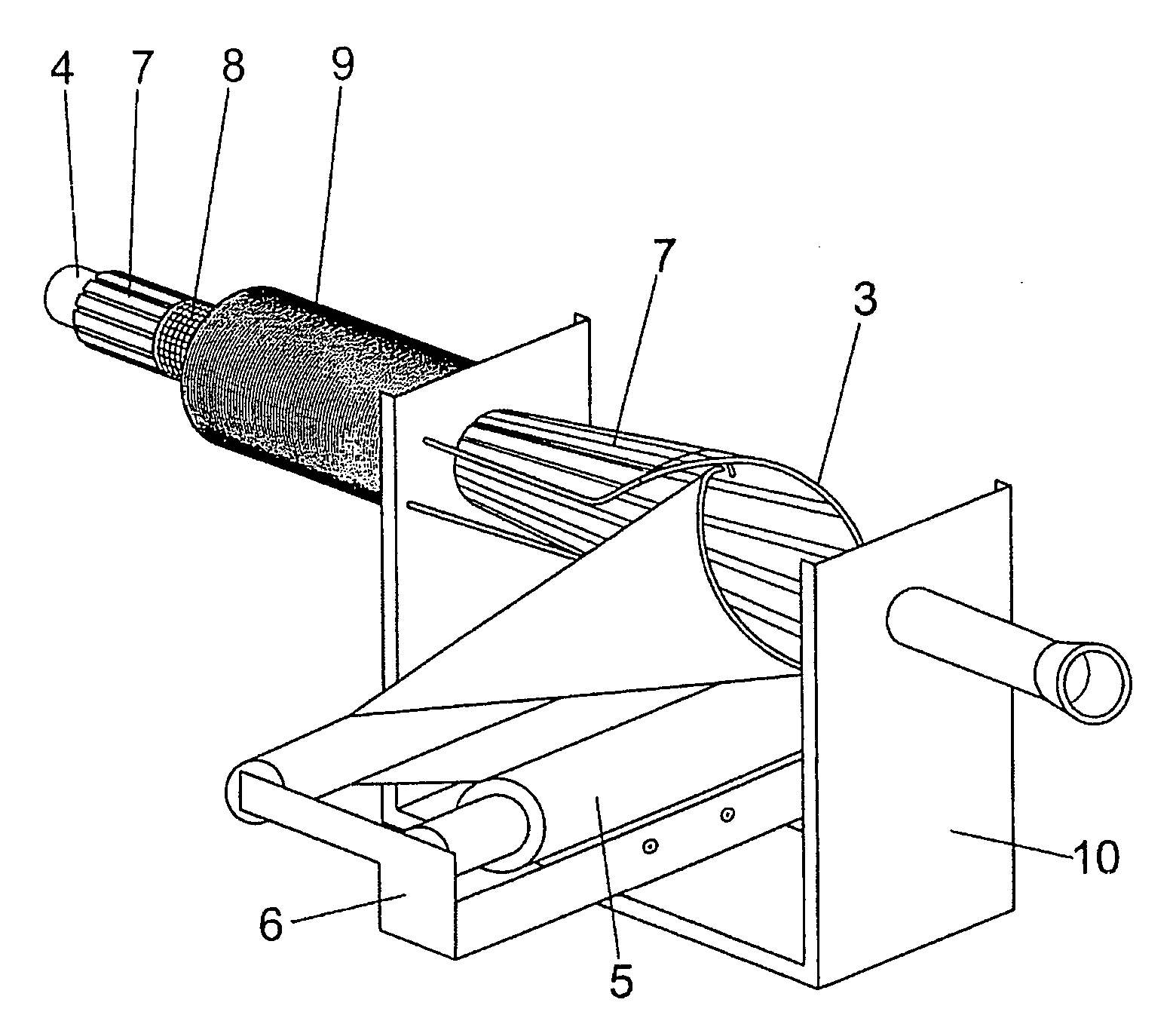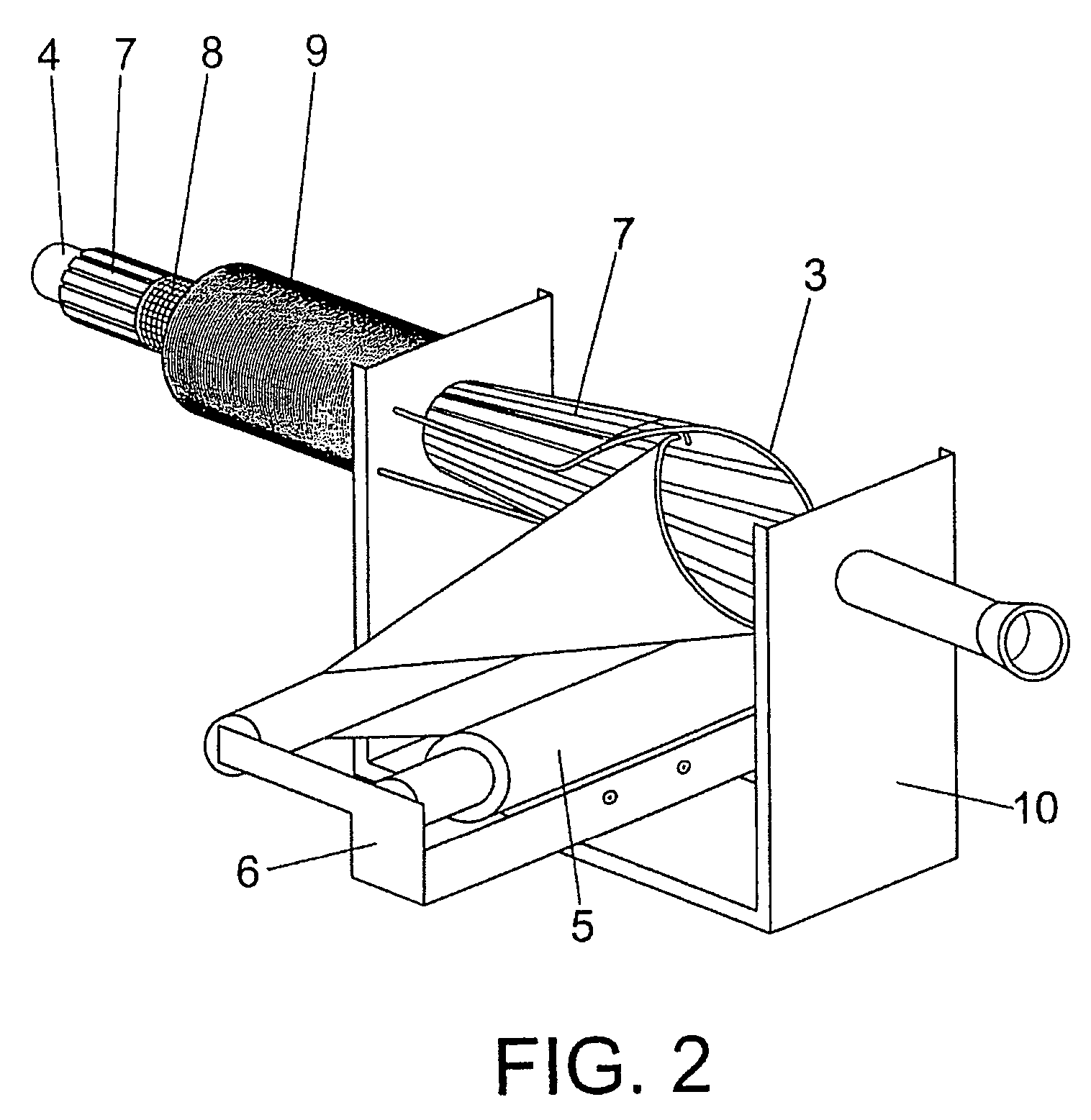This system is the slowest of all and requires the highest manpower.
The subsequent operations of holding and shaping the pieces, cutting, clipping or stapling the ends and piercing the pieces are as described for the previous case, with the only added difficulty that as the tube remains full of meat the operator must manually strangle the stuffed piece at the end of the stuffing tube, separating the meat mass and pulling on the double casing until enough of it is exposed to cut and / or clip it, according to the method employed.
Although this system automates all stuffing operations, their rate cannot exceed 7 parts per minute as the sequence of operations described is very slow.
This slowness is due to the size and weight of the moving parts, clamps, advancing and receding tube, piston, clipping machine, etc. and to its pneumatic actuation.
Additionally, the machine is expensive and specific to this type of products.
Regardless of the system used, it is common to add to all the aforementioned operations the passage of the finished parts through a vacuum chamber as a complement to piercing, to help eliminate the air trapped during the stuffing, which causes important problems affecting the external appearance of the finished product and resulting in significant financial losses.
The systems hitherto developed have not attained a full and efficient automation for processing products stuffed in a double film and net casing.
Machines have been developed, such as that previously described in the third system, both for stuffing entire muscles or large pieces of meat and for reconstituted products that also staple or clip the pieces automatically, but these machines are specific for this operation, as well as slow, large and costly, as they are designed to perform the separation and clipping operations of stuffed pieces through tubes whose diameter is similar to that of the finished piece.
This means that it is necessary to perform the slow sequence of operations previously described, which requires a specific complex machine, large and costly.
The system solves some of the drawbacks inherent to this type of elaboration, but the operation continues to be slow, not above seven pieces per minute, and the stuffed products include a great amount of surface air that is difficult and never completely eliminated.
In addition, this system does not allow a continuous stuffing that keeps the tube full of meat, as the clamps would have to close on too large a diameter of stuffed product, breaking and bursting the film due to the friction and sudden increase in pressure caused by the displacement of the large amount of meat to be separated.
As a result of the slow stuffing in both the manual and the mechanical operation the system productivity is low.
This is made worse by the need for frequent stoppages to replace the tube containing the shirred or compressed net due to the limited amount of net that can be loaded on the tube.
The piece piercing operation and their manipulation to subject them to a vacuum in order to remove the air simply adds manpower cost to the operation, which in the case of the most automated operation can represent up to a 60% addition to the rest of the operation.
Because of the low accuracy of the manual operation, when this is the case the weight control is poor.
This difference is due to the different contact area in either case between the net and the tube and is made worse by the high tension to which the net is subjected as a result of the tube diameter.
As the net loaded at the end is the first to be dispensed during the application, the aforementioned covered fragments will be released with greater difficulty, giving rise to short and tightened pieces with a risk of no overlapping and losing meat, or to soft and long pieces when the covered fragments are suddenly released.
Both the films and the elastic nets used to wrap meat products are expensive and constitute an important part of the production cost.
Current production systems, whether manual or mechanical, are not optimised as regards using the necessary amount of these materials.
In the manual operation case, the waste of material is due t the oscillation in the length of the pieces, often inevitably using more material than is required, as described above, as well as to the excess material wasted on the ends to hold the pieces as they are tightened to provide the necessary tension and clip or staple them.
The air trapped during the stuffing constitutes one of the most serious drawbacks of these systems.
This results in faults of the surface appearance of the products when they are released from the net for their final packaging.
This is especially problematic in this type of products, which are expensive and of high quality.
The areas in which the air is located are paler in colour than the rest when the products have been smoked, they are recessed and when collagen films are used these have adherence problems.
In the case of products stuffed with a piston, the stuffing operation pushes all the air in the tube in which the product must be pushed into the film and net assembly, thereby worsening the problem.
In the first case this represents an additional operation that reduces the productivity of the process and that does not solve the problem fully, while the second case may weaken the film, as well as increasing its price.
Another common problem is loss of overlapping.
The mechanical problems of the process mean that the overlapping of the longitudinal film ends is frequently lost.
When this occurs, the product is not correctly covered by the film, so that meat is lost and problems of many kinds arise, mainly of appearance and adherence to the net, which cannot be later removed without tearing, resulting in poor quality products.
 Login to View More
Login to View More 


